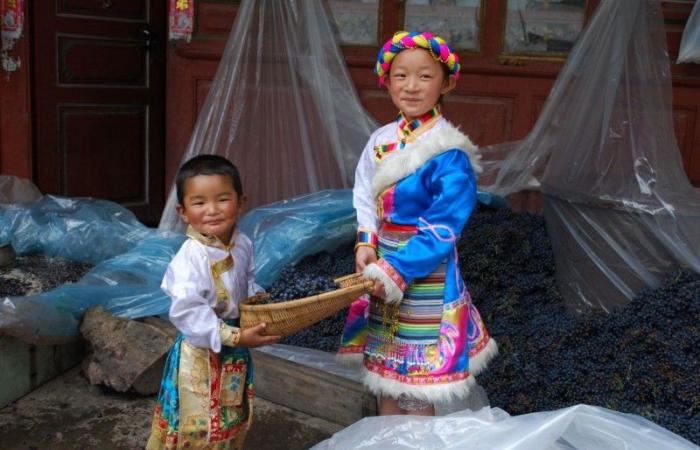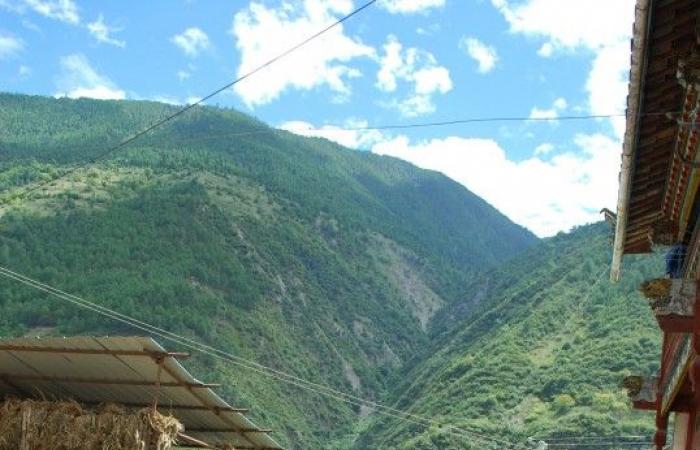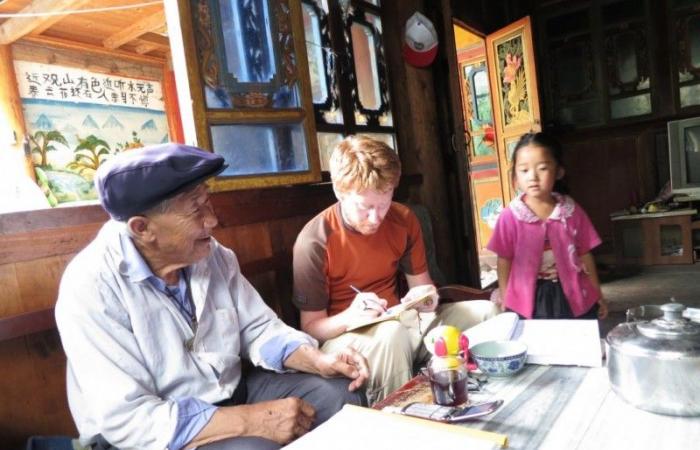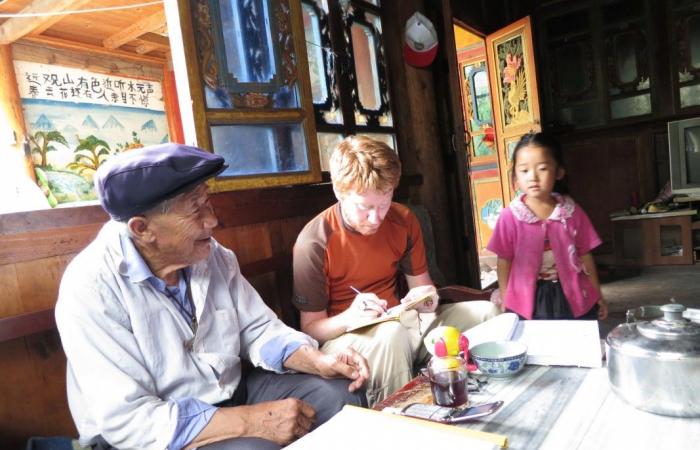When you think of the world’s most celebrated wine regions, you may think of France, Italy or California’s Napa Valley. How about Tibet?
Rebranded by the Chinese government as “Shangri-La,” a borderland region in southwestern China could be the world’s next wine hotspot. It’s the subject of Crafting a Tibetan Terroir: Winemaking in Shangri-Laa new book by Brendan A. Galipeau, a lecturer in Binghamton University’s Environmental Studies program.
“The whole global picture about wine is changing,” he said.
An anthropologist by training, Galipeau first visited the region as an undergraduate in 2007 and saw that mountain farming operations had swapped out wheat and barley for grapes at the encouragement of the government. During his master’s program, he returned as part of a National Science Foundation-funded project that assessed the impact of dam building on the culture, livelihood and economy of Tibetans along the Mekong River.
“I realized that this agricultural product was already transforming lives in the way that resettlement was, moving people away from the traditional form of agriculture: seasonal agropastoralism,” he said.
In the 19th century, French and Swiss Catholic missionaries came to the lowlands of Tibet, and Christian families in one town began making sacramental wine for church use.
“Every family in that community makes wine themselves and they sell it to tourists. Some of them have become much more sophisticated with bottling and selling their bottles throughout the country, but the primary market is a tourist market,” Galipeau said.
A year after renaming the region Shangri-La to draw ethno-tourism, the Chinese government introduced grapes as a cash crop in 2002. The household industry of that initial Catholic village has since expanded throughout the region.
A new industry
Traditionally, families in the region have practiced transhumance, growing grain and raising yaks and cattle. In the summer, they moved the animals up the mountains for pasture and brought them back to villages in the valley during the winter, where they would feed them chaff from the grain.
The Chinese government initially viewed tourism and viniculture as a way to alleviate poverty by replacing subsistence agriculture with integration into China’s market economy.
There’s another benefit, too. With the size of their economy and population, China is expected to eventually outpace most other countries in terms of wine consumption. Prior to a 2012 government crackdown on graft and excess luxury, the country had already cornered the market on the world’s most expensive Bordeaux wines, Galipeau said.
“They still import a lot of mid-range wines and, in order to meet the demand, have expanded their own domestic industries,” he said.
The country’s biggest wine regions are actually Ningxia in the northwest and Shandong on the northeast coast, with Shangri-La as an up-and-coming area. Only the dry river valleys in the latter region have gone over to viticulture; higher elevation communities still grow wheat and barley and raise cattle.
In 2012, the French luxury conglomerate Louis Vuitton Moët Hennessy (LVMH) entered the scene; in their estimation, Shangri-La’s climate and soils held the potential for producing top-quality red wines. LVMH exports about two-thirds of the Tibetan-produced wines to Europe and the U.S., selling the remaining third in China. Moët Hennessy wines are very expensive, typically retailing about $300 a bottle, Galipeau said.
There are smaller operations, too; for example, a French expatriate living in Shanghai has done business in China for more than 30 years and, with a family background in wine, began a successful winery in cooperation with local villagers. These boutique outfits typically sell their wines domestically, but also export them abroad. Overall, it’s a growth industry; in the time that Galipeau took to finish his book, even more wineries have sprung up.
Fermenting change
The wine industry has brought significant cultural change to this Tibetan region.
Switching to grapes as a cash crop, families have sold off their animals and settled into a more sedentary lifestyle. Most of the lowland valley communities now purchase rice from the market instead of growing their own grain.
The community working with LVMH has benefited economically. If they choose, the residents have the right to work in the vineyard and earn a salary in addition to the income from the lease agreement with the French firm.
“They make more money by leasing their land to the French for 50 years than they ever did previously, growing grapes on an annual basis and selling them to state-supported wineries,” Galipeau said. “They have a guaranteed income off their land and they don’t even need to worry about farming it because that’s the company’s responsibility.”
Residents find ways to keep in touch with the culture, even as their economies change. Although they no longer need to drive yaks up the slopes, families still hike up the mountains during the summer to collect caterpillar fungus, an expensive commodity used in traditional Chinese medicine.
But their newfound wealth has a cultural cost: The people have become increasingly disconnected from the mountains that were once central to community life, Galipeau said.
And there is another downside to the new cash crop. While high-end operations like LVMH are organic, others have relied upon chemical pesticides and fertilizers.
Some in the region have pushed back, including Buddhists and environmentalists worried about the impact on the region’s sacred landscapes and ecology. It’s one of the most biodiverse temperate regions on Earth, with old-growth forests and Buddhist pilgrimage sites.
“There are questions about the long-term sustainability of soils with all of that pesticide use,” Galipeau said.









